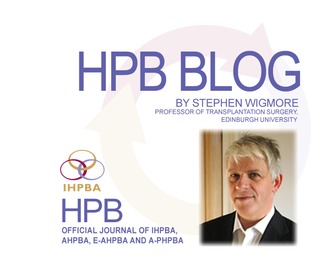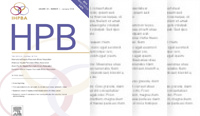International Hepato-Pancreato-Biliary Association
HPB Blog: March 2016

For those of us in the Northern hemisphere March is often seen as a month for optimism with longer days and less inclement weather. We hope that the March edition of HPB will also hopefully add to this feeling of warmth.
This issue headlines a multicenter randomized trial of the fibrin sealant Evarrest compared with standard of care for bleeding after liver resection. The trial showed superior control of bleeding in the fibrin pad group at 4 minutes in all cases and at 10 minutes in anatomical liver resections. Where Evarrest fits in to the armamentarium of products to control bleeding will remain to be seen but is a very welcome addition to the toolbox.
Still on the subject of liver resection, Hadden and colleagues from Sydney have performed a systematic review and meta-analysis of outcomes of patients with colorectal liver metastases (CRLM) who also undergo resection of extrahepatic metastases. This is an excellent study and one which I hope will be highly cited. It provides a compelling argument for a more aggressive approach in patients with CRLM and extrahepatic disease where there is a good chance of obtaining an R0 resection.
Tohme and colleagues from Pittsburgh interrogated the American College of Surgeons' National Surgical Quality Improvement Program database to investigate the effect of preoperative anaemia on outcomes of patients undergoing liver resection for CRLM. They found that almost a third of patients were clinically anaemic going into surgery and in adjusted models anaemia correlated with postoperative morbidity but not mortality. There is significant interest in the critical care community about preoperative correction of anaemia and maybe this is a theme for us to address in the HPB community.
On the subject of blood, Dekker and colleagues from Amsterdam investigated a previously reported adverse association between resection of perihilar cholangiocarcinoma and perioperative blood transfusion. They found no such association with blood transfusion and conclude that the effect reported in previous studies related to the circumstances requiring transfusion rather than a cancer specific effect.
On the pancreas surgery front, the ongoing debate about the best method for reconstructing the pancreas after resection rumbles on. In this issue, Wang and colleagues from Taipei present a large cohort study which shows superior outcomes in their hands for a “Blumgart style” pancreaticojejunostomy compared with a pancreaticogastrostomy.
Rezaee and colleagues from Johns Hopkins, Baltimore, attempt to clarify the position of IPMN with high grade dysplasia in the clinicopathological spectrum from benign to frankly malignant. This is a large study and worth a thorough read. It shows that high grade dysplasia is a very different entity from ductal adenocarcinoma of the pancreas (PDAC) in terms of having low risk of spreading beyond the pancreas but highlights the real and present danger of recurrence of PDAC elsewhere in the pancreas in patients with high grade dysplasia.
Portal vein thrombosis is a difficult situation to deal with in a number of HPB contexts and two papers in the March edition of HPB focus on this subject. In the transplant setting, Stine and colleagues from Virginia, interrogated the UNOS database and found that portal vein thrombosis is more commonly associated with hepatic artery thrombosis than as an isolated event. The chicken-egg question of which comes first has not yet been resolved. Meanwhile in the liver resection arena, Wei and colleagues from Shanghai China, present a novel paper using 3 dimensional mapping of tumour thrombus to facilitate resection of hepatocellular carcinoma complicated by portal vein invasion. They show improved resection margins and liver volume conservation in patients undergoing resection of HCC with portal vein invasion.
So there is something for everyone in this edition of HPB and we hope you enjoy it. Please explore the new Elsevier website for HPB http://www.hpbonline.org , which has different features to the previous website.
Stephen J Wigmore
CLICK HERE for the Table of Contents
CLICK HERE for more information about the 12th IHPBA World Congress
CLICK HERE for more information about the IHPBA State of the Art Conference on MIPR
Corporate Partners
If you are interested in becoming a Corporate Partner of the IHBPA please contact industry@ihpba.org
Find out more


